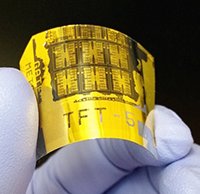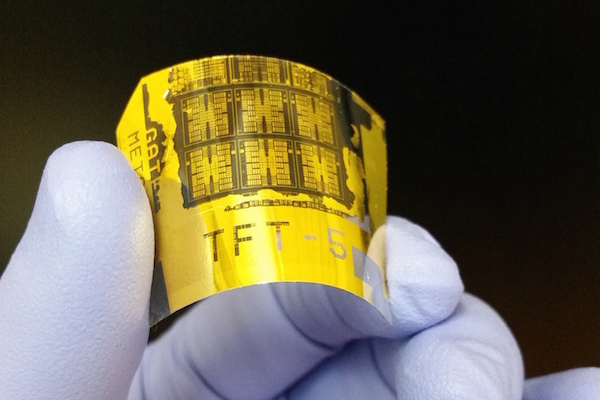Sensors go on a bender: Flexible phototransistors let cameras “see” more like you and me
posted Tuesday, November 3, 2015 at 4:25 PM EDT

Getting high-quality images in low light may soon become easier as a team of engineers at the University of Wisconsin-Madison have developed a flexible silicon phototransistor which they claim could lead to improved image quality in low light conditions. In addition, the new silicon phototransistor could help to reduce the size of digital cameras.
The new phototransistor is inspired by mammalian eyes, and the team of Zhenqiang "Jack" Ma and a research scientist, Jung-Hun Seo have created the "fastest, most responsive flexible silicon phototransistor ever made," according to the University of Wisconsin-Madison's press release. Phototransistors are typically flat, but with the flexible design of Ma and Seo's silicon phototransistor, it can be shaped to conform to the requirements of the optical system, collecting light in a way more similar to that used by our own eyes.
An advantage of the silicon phototransistor comes from Ma and Seo's innovative new process which inverts the finished phototransistor onto a plastic substrate, placing the reflective metal layer at the bottom of the phototransistor as is done in traditional, flat backside-illuminated sensors. With this construction, the light sensitive silicon layer is not blocked by metal like it would be on a typical phototransistor, resulting in Ma and Seo's phototransistor being more efficient.

In addition to this efficient construction, Ma and Seo have also placed electrodes on the bottom of the phototransistor, improving light absorption without having to rely on any external amplification. This, notes Ma, creates a "built-in capability to sense weak light" and creates new possibilities for better-performing flexible photodetection systems.
The combination of high sensitivity and responsive performance in a flexible sensor is said to be a first, and it brings flexible sensors one step closer to meeting their potential. With the sensor conforming to the needs of the lens, and not the other way around, cameras can potentially be made less bulky. Now, perhaps, they can also do so without having to sacrifice image quality, especially in low light.
(Seen via Tech Times)